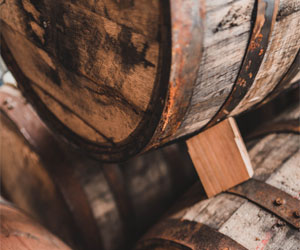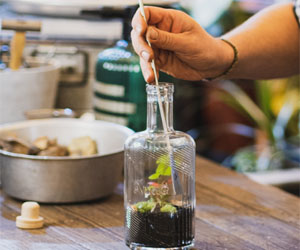


A Time-Honored Craft With Global Diversity

Brewing traditions, deeply rooted in the history and culture of societies around the world, are a testament to the enduring nature of this time-honored craft. Whether it's the classic brewing techniques of Europe, the unique and complex flavors of Asia, or the emerging trends in craft brewing, these traditions reflect the art, science, and customs that shape the diverse landscape of beer production.
European Brewing Traditions: Europe is the heartland of brewing traditions. Countries like Germany are known for their precise brewing methodologies, resulting in iconic beer styles such as Pilsner and Hefeweizen. In Belgium, brewing is steeped in monastic traditions, and Trappist monasteries have been producing renowned ales for centuries. The British brewing tradition gave rise to ales and stouts, with styles like the English Bitter and Imperial Stout still enjoyed worldwide.
The Reinheitsgebot: One of the most famous aspects of European brewing tradition is the Reinheitsgebot, the German Beer Purity Law. Established in 1516, it dictated that beer could only be brewed with water, malt, hops, and later yeast. This law has had a lasting impact on brewing standards and the quality of beer production.
American Craft Brewing Revolution: In contrast to Europe's longstanding traditions, the United States has seen a more recent brewing revolution with the rise of craft breweries. This movement began in the late 20th century and has since grown exponentially. Craft brewers in the U.S. embrace innovation and experimental brewing techniques, leading to a wide array of beer styles and flavors. The American craft brewing scene has redefined brewing traditions, introducing concepts like "hop-forward" beers and barrel-aging, and challenging conventional norms.
Asian Brewing Traditions: Asia boasts an array of distinctive brewing traditions. Sake, a Japanese rice wine, is an integral part of Japanese culture, with centuries of tradition and craftsmanship. China, on the other hand, has a rich history of brewing rice-based beers like Qingdao, which are now appreciated globally. South Korea is known for its popular rice-based brew, Makgeolli, a traditional and lightly sparkling beverage.
Beer As A Cultural Symbol: Brewing traditions often intertwine with cultural, religious, and social customs. In places like Germany, beer gardens and Oktoberfest celebrations are iconic social gatherings. In Mexico, Day of the Dead festivals include offerings of beer to honor the deceased. Throughout history, beer has played a significant role in ceremonies, rituals, and community bonding.
Global Fusion And Innovation: The brewing world is a global stage where traditions blend and evolve. Brewers often take inspiration from different regions and styles, resulting in fusion brews that incorporate elements of various brewing traditions. For example, the emergence of "Belgo-American" beers combines the brewing traditions of Belgium with the innovative spirit of American craft brewing.
Brewing Traditions In The Modern Era: In today's interconnected world, brewing traditions are shared and celebrated globally. The rise of international beer festivals, beer competitions, and the craft beer movement is a testament to the enduring appeal of brewing. It's a dynamic and ever-evolving craft where old meets new, and traditions find new life in the hands of innovative brewers.
Brewing traditions are a testament to the rich history, diversity, and cultural significance of the craft of brewing. Each tradition tells a unique story of the people, practices, and flavors that have shaped the world of beer. Whether you're sipping on a traditional Belgian Trappist ale or an experimental craft brew from a local brewery, you're enjoying the legacy of brewing traditions that spans centuries and continents. Brewing is a universal language, and its traditions continue to be celebrated and cherished worldwide.
A Tranquil Journey To Inner Peace
 The Essence Of Herb Garden Meditation
The Essence Of Herb Garden Meditation
Meditation is a practice that has been revered for centuries for its ability to calm the mind, reduce anxiety, and promote emotional balance. When combined with the natural beauty and fragrance of an herb garden, meditation takes on a whole new dimension. Herb garden meditation involves spending time amidst your herbal haven, embracing the serenity, and harnessing the therapeutic benefits of herbs.
Preparing Your Herb Garden
Before embarking on a journey of herb garden meditation, it's essential to create an inviting space. Your herb garden should be well-maintained, with vibrant herbs and a comfortable spot for sitting or lying down. A soft blanket, a cushion, or a garden bench can be an ideal choice to enhance your comfort. Ensure that your chosen spot is free from distractions and noise, so you can fully immerse yourself in the meditation experience.
The Meditation Process
Begin your herb garden meditation by finding a comfortable seated or lying position. Close your eyes and take a few deep, calming breaths. Feel the earth beneath you and the gentle rustle of the herb leaves. Let your senses absorb the natural aromas, the warmth of the sun, and the soft caress of the breeze.
As you breathe in, focus on the scents around you. The invigorating aroma of basil, the calming fragrance of lavender, or the zesty scent of mint can all inspire different aspects of your meditation. You can choose herbs based on their individual healing properties or simply let your intuition guide you.
While meditating, let your thoughts come and go, without attachment or judgment. Embrace the present moment and the beauty of your herb garden. You may choose to incorporate a mantra or positive affirmations to enhance the experience.
Creativity, Skill, And Personal Fulfillment
 Limitless Creativity: Woodworking projects provide a platform for limitless creativity. From crafting custom furniture pieces that blend seamlessly with your home's decor to designing unique wooden sculptures that captivate the imagination, there are no boundaries when it comes to the artistic possibilities. Woodworkers have the privilege of transforming their ideas and visions into tangible forms, resulting in projects that reflect their own unique style and personality.
Limitless Creativity: Woodworking projects provide a platform for limitless creativity. From crafting custom furniture pieces that blend seamlessly with your home's decor to designing unique wooden sculptures that captivate the imagination, there are no boundaries when it comes to the artistic possibilities. Woodworkers have the privilege of transforming their ideas and visions into tangible forms, resulting in projects that reflect their own unique style and personality.
Practicality Meets Artistry: Woodworking is not solely about artistic expression. Many projects fuse practicality with artistry. Whether you're building a sturdy bookshelf, a functional workbench, or a custom kitchen cabinet, your creations are designed to enhance daily living while showcasing the craftsmanship behind the work. This blend of form and function adds depth to the world of woodworking projects, where utility meets aesthetics.
The Learning Curve: Woodworking projects encompass a wide spectrum of complexity, catering to beginners and experts alike. For those new to the craft, simple projects like wooden coasters or picture frames offer an excellent starting point. As you gain confidence and experience, you can gradually advance to more intricate endeavors, such as crafting intricate tables, intricate cabinetry, or ornate carvings. The learning curve is part of the appeal, encouraging woodworkers to expand their skills and knowledge.
An Artistic Masterpiece In Thread
 Versatility In Design: One of the satin stitch's most appealing features is its versatility. It can be used to create a wide range of designs, from simple geometric shapes to intricate, lifelike images. Whether you are working on floral motifs, animal figures, or abstract patterns, the satin stitch allows for artistic expression in various forms.
Versatility In Design: One of the satin stitch's most appealing features is its versatility. It can be used to create a wide range of designs, from simple geometric shapes to intricate, lifelike images. Whether you are working on floral motifs, animal figures, or abstract patterns, the satin stitch allows for artistic expression in various forms.
Achieving Dimension And Texture: While the satin stitch is celebrated for its smoothness, it also has the potential to add dimension and texture to embroidery projects. By altering the stitch length or layering stitches in different directions, artists can create the illusion of depth and detail, bringing designs to life.
The Importance Of Thread Selection: Thread selection is crucial when using the satin stitch. Traditional satin stitch threads include silk and rayon due to their sheen and luster. Modern options also include polyester threads that are known for their durability and colorfastness. Thread color choice plays a significant role in the overall impact of the satin stitch, enabling the creation of realistic gradients or bold, contrasting patterns.
Challenges And Techniques: While the satin stitch is beautiful, it's not without its challenges. Ensuring consistent stitch length and alignment requires practice and attention to detail. Embroiderers often use a laying tool or a frame to keep the threads smooth and untangled while stitching.
A Sustainable Lifestyle For A Better Future
 Reduce, Reuse, Recycle: This timeless mantra forms the foundation of green living. Reducing consumption, reusing items when possible, and recycling materials are essential steps in minimizing waste.
Reduce, Reuse, Recycle: This timeless mantra forms the foundation of green living. Reducing consumption, reusing items when possible, and recycling materials are essential steps in minimizing waste.
Energy Efficiency: Green living encourages energy-conscious choices such as using energy-efficient appliances, properly insulating homes, and turning off lights and electronics when not in use.
Sustainable Transportation: Opting for eco-friendly modes of transportation, such as biking, walking, carpooling, or using public transit, reduces carbon emissions associated with personal vehicles.
Sustainable Food Choices: Adopting a diet rich in locally sourced, organic, and plant-based foods can reduce the carbon footprint associated with food production and distribution.
Water Conservation: Conserving water through practices like fixing leaks, using low-flow fixtures, and reducing water waste is a fundamental aspect of green living.
Minimalism: Embracing minimalism involves living with fewer possessions, which not only reduces consumption but also fosters a simpler, more sustainable lifestyle.
The Art Of Creative Upcycling
 Inspiration And Community
Inspiration And Community
Trash to treasure often inspires others to embrace their creativity and sustainability. There are numerous online communities, social media groups, and DIY websites dedicated to upcycling. These platforms provide opportunities to share your projects, gain insights, and connect with like-minded individuals who share a passion for creative reuse.
Getting Started With Upcycling
Start Small: If you're new to upcycling, begin with small, manageable projects. Repurposing an old picture frame or transforming a piece of clothing can be a great starting point.
Gather Supplies: Depending on your chosen project, collect the necessary supplies, which may include tools, paint, glue, or other materials.
Seek Inspiration: Look for inspiration in books, magazines, online platforms, and by observing the work of other upcyclers.
Learn Techniques: Familiarize yourself with upcycling techniques and methods. Learning how to properly clean, repair, or transform items is essential for successful projects.
Take Safety Precautions: Depending on your project, be aware of safety precautions. When working with tools, chemicals, or heavy materials, safety should be a top priority.
The art of turning trash into treasure is not only a sustainable and environmentally responsible practice but also a creative and economical endeavor. Whether you're a seasoned upcycler or new to the world of creative reuse, there are always opportunities to transform discarded items into valuable and beautiful treasures. As you embark on your upcycling journey, you'll discover the joy of creating something unique, contributing to a greener planet, and embracing a more resourceful and imaginative way of life.